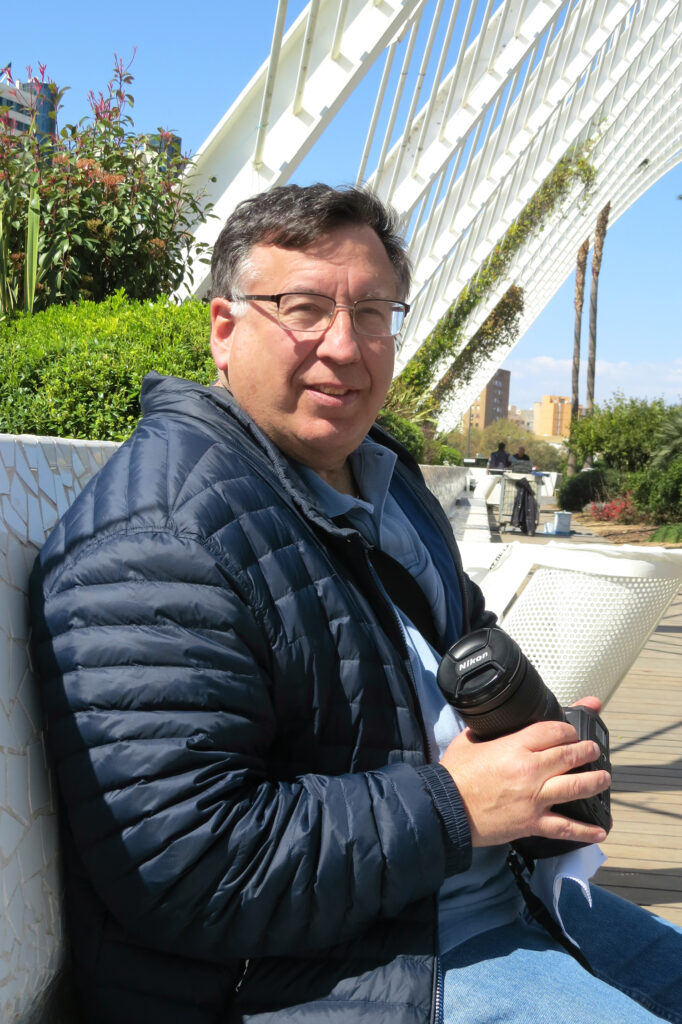
Member Profile: Glenn Goldman
1. What do you do, and how long have you been doing it?
I am currently Professor and Director of the School of Art + Design at the New Jersey Institute of Technology (NJIT) and have been so since the school’s founding in 2008. For 26 years prior to that, I taught in the School of Architecture at NJIT. I am a registered architect in Massachusetts, New Jersey, and New York and a licensed professional planner in New Jersey.
2. What was your first job?
My first job was working as a child in my father’s electrical supply store in Jersey City, New Jersey. My job was to do whatever my father needed from stocking products to helping customers (or so I thought at the time) to sweeping the floors. I had my first building project for him when the store changed location and I built shelving for wire reels.
3. Where did you complete your formal education?
My education is unending, and I learn every year I come to SIGGRAPH. In a formal degree-granting setting I studied architecture and received my undergraduate degree from Columbia and graduate degree from Harvard.
4. How did you first get involved with ACM SIGGRAPH?
At one point some time ago, the Education Committee put out a call for Faculty Submitted Student Work and I submitted work from my students. When I went to see the display at the Education Booth, I ended up getting recruited to become part of the Education Committee.
5. What is your favorite memory of a SIGGRAPH conference?
After more than thirty conferences, there are so many wonderful memories. Seeing my first electronic theater in Atlanta in 1988 got me hooked. Meeting, and getting to know, the SIGGRAPH Pioneers has been, and continues to be, a pleasure. And I’m always happy to see my current and former students at the conference.
6. Describe a project that you would like to share with the ACM SIGGRAPH community.
I continue an ongoing project started in the mid-1980s when a colleague and I created fully electronic architectural design studios with 3D modeling and color to affect the products and processes of architectural design and education. Since that time I’ve moved from modeling and using new methods of representation to inform our design decisions to dealing with light and sound and most recently to having entire interior design studios working in virtual reality as students “inhabit” their spaces – all with the intent to generate more information in an accessible manner for designers to make better decisions within creative disciplines.
7. If you could have dinner with one living or non-living person, who would it be and why?
I must have two – one from my family and one not. I would love to have dinner with my maternal grandfather, Alexander Gurvitch. He loved technology and all sorts of new things but died long before the field we know as computer graphics became ubiquitous. He would have loved to attend a SIGGRAPH conference and I would love to share with him what I’ve been able to do.
The other person I would love to talk to is Thomas Jefferson (slave ownership notwithstanding) as he was the only President who was also an architect and he brought the wine industry to the United States.
8. What is something most people don’t know about you?
I used to play pick-up games of basketball in NYC parks to relax while in college. I gave it up after I dislocated my right thumb on my first trip home from grad school and I realized at the time, my livelihood depends, in part, on my use of hands. I haven’t played since. I had to learn to draw left-handed just to finish my first year.
The other item most people don’t know is that I failed conduct in elementary school in 4th and 6th grades.
9. From which single individual have you learned the most in your life? What did they teach you?
My parents have each taught me to become the person I am. While they did not teach me discipline-specific material, they taught me how to learn, to love to learn, and what to do with what I learn.
10. Is there someone in particular who has influenced your decision to work with ACM SIGGRAPH?
There are a lot of friends I’ve made at SIGGRAPH and people with whom I enjoy working. But Steve Cunningham was the one who first convinced me to become a contributor, and Colleen Case is the one who convinced me to become a volunteer.
11. What can you point to in your career as your proudest moment?
Election to the College of Fellows in the American Institute of Architects for my contribution to the profession based on the work I did integrating information technology and computer graphics into the architectural design process was a validation of my efforts and an achievement of which I am most proud.
Establishing the School of Art + Design at NJIT is less a “moment” and more of an accomplishment. After moving over from Architecture, where I taught for 26 years, I started a school with three programs: Interior Design, Industrial Design, and Digital Design. The Digital Design curriculum is a multi-disciplinary generalized program that I modeled after SIGGRAPH in which we made sure students were seriously exposed to the same different and interlocking programs found annually at the conference.